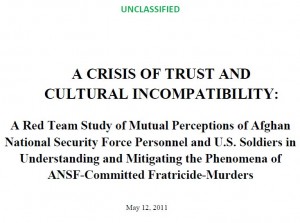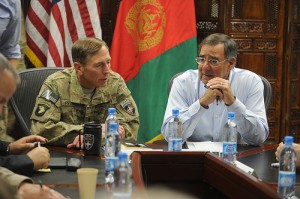As Pakistan Angles for Joint Ownership of Drone Attacks, Kerry To Be Dispatched for Another Apology
Dawn is reporting this morning that Pakistan is in the process of abandoning its demand that US drone strikes in Pakistan end and instead is now bargaining for joint ownership of the process, giving the Pakistanis access to key intelligence and advance knowledge of strikes. In the meantime, the Express Tribune is reporting that John Kerry is soon to be dispatched to Pakistan to convey an official apology for the November, 2011 border post attack that killed 24 Pakistani troops. Both of these developments occur within the larger framework of the US and Pakistan working to redefine cooperation on various fronts as a precursor to reopening NATO supply routes through Pakistan.
As the Dawn story points out, Pakistan seems to have moved to negotiating for joint ownership of drone strikes because the US flatly rejects Pakistan’s demand for an end to drone strikes:
Pakistan and the United States have begun exploring various options for joint ownership of drone attacks against militant targets in the tribal belt after the US flatly refused to stop the predator strikes.
“We are striving to have genuine co-ownership of the drone operations,” a senior Pakistani diplomat, who has been regularly briefed on the ongoing behind-the-scenes negotiations between Islamabad and Washington, told Dawn on Thursday.
Given the level of distrust the US has shown toward Pakistan’s intelligence operations, my guess is that sharing advance knowledge of targets will be rejected just as strongly as the concept of stopping drone attacks was dismissed. In anticipation of losing on the issue of drones, they are now being left off Prime Minister Yousaf Raza Gilani’s list of areas in which the US and Pakistan are nearing final agreement:
Prime Minister Yousuf Raza Gilani, while outlining the negotiation agenda at the DCC meeting over the weekend, omitted drone attacks.
“Negotiation on new terms and conditions for resumption of the Ground Lines of Communication (more commonly referred to as Nato supply routes), joint counter-terrorism cooperation, greater inter-agency coordination, transparency in US diplomatic and intelligence footprint in Pakistan, strengthening of border security and non-use of Pakistan’s territory for attacks on other countries and expulsion of all foreign fighters from Pakistan’s territory, are our fundamental policy parameters,” Mr Gilani said while listing ‘policy parameters’ for re-engagement with the US.
The current break in US-Pakistan relations was triggered by the killing of 24 Pakistani troops at a border station last November. It now appears that a formal apology for that incident is in the works:
US President Barack Obama is sending his key trouble-shooter to Pakistan later this month amidst efforts to reset ties in light of the new foreign policy guidelines recently approved by parliament.
Former presidential hopeful and chairman of the US Senate’s Foreign Relations Committee Senator John Kerry is expected to travel to Islamabad on April 29 to meet the country’s top civil and military leadership, an official told The Express Tribune.
Kerry seems to be the go-to guy on both apologies and non-apologies, as he was dispatched for the apology for the Raymond Davis incident and was sent to tell Pakistan that we would not apologize for the Osama bin Laden killing.
Considering that Pakistan is also demanding an end to covert agents inside Pakistan, we are left to wonder whether Kerry will use his plane once again to remove spies, as he did while delivering the Davis incident apology.


